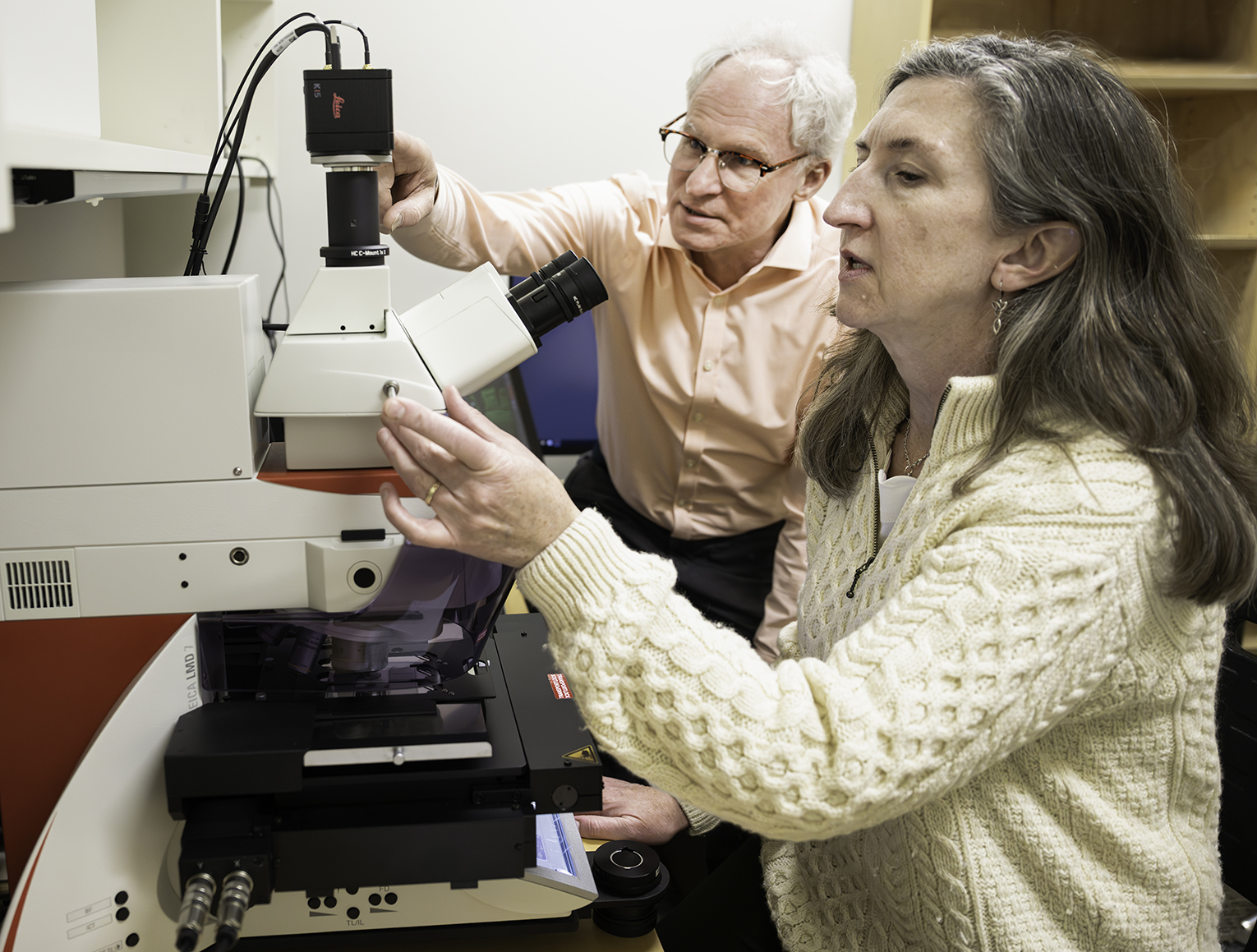Researchers in UNT’s Department of Biological Sciences and BioDiscovery Institute earned $635,000 in grants from the U.S. Department of Agriculture to further understanding of cotton plant development and purchase laser microdissection equipment to enhance high-resolution research capabilities in the North Texas and Southern Oklahoma region.

Awardees:
- Brian G. Ayre, principal investigator and professor of biochemistry and molecular biology
- Roisin C. McGarry, research associate professor of plant development and plant molecular biology
Sponsor: U.S. Department of Agriculture
Award Total: $294,000 over three years
Award Type: USDA National Institute for Food and Agriculture and Food Research Initiative Foundational and Applied Science Program
About the Research: Ayre and McGarry, who are affiliated with UNT’s BioDiscovery Institute, are researching ways to increase the resiliency and productivity of cotton with a USDA grant earned based on their innovative project proposal and UNT’s designations as a Hispanic- and Minority-Serving Institution. Specifically, they are focusing on cotton bast fibers, which develop in the phloem or “inner bark” of the plant’s stem. Cotton bast fibers are an underutilized part of the cotton plant that could hold immense potential for industrial applications such as an alternative to synthetic fiber derived from fossil fuels. Their research examines the development of these bast fibers and will contribute to the scientific understanding of the genetic networks that regulate the formation of this unique and valuable plant tissue. Cotton is one of the world’s leading agricultural crops and the most in-demand fiber crop. Knowing more about cotton bast fibers can help cotton producers make informed decisions about the economic viability of the plant tissue and its possible applications.
Impact Goal: “As climate change impacts our world, we need to re-examine cotton production systems to increase crop resiliency and expand opportunities for agricultural bio-products to replace petroleum-derived materials,” Ayre says.
“Cotton bast fibers are an abundant — but overlooked — source of natural fibers that could offer an economic boost to cotton producers and rural economies. By understanding bast fiber development and cell wall biochemistry, we may increase crop returns by enriching a value-added co-product while generating new knowledge for fundamental science.”
Awardees:
- Brian G. Ayre, principal investigator and professor of biochemistry and molecular biology
- Roisin C. McGarry, research associate professor of plant development and plant molecular biology
- Vanessa M. Macias, assistant professor of invertebrate biology, genetic engineering and molecular biology in mosquitoes
- Patrick J. Horn, assistant professor of plant biochemistry
- Jyoti Shah, University Distinguished Research Professor and chair of UNT’s Department of Biological Sciences
Sponsor: U.S. Department of Agriculture
Award Type: USDA National Institute for Food and Agriculture Equipment Grants Program
Award Total: $341,000

About the Research: This grant funded the purchase of a flexible and user-friendly laser microdissection (LMD) system to support current food and agricultural research – including UNT’s cotton research and other projects in the BioDiscovery Institute. LMD offers proven, versatile technology for precision sample preparation. In biological, agricultural and biomedical sciences, isolating specific organs, tissues or individual cells — with microscopic resolution — facilitates the finest scale of discovery and is particularly important for developmental biology, biochemistry, pathology, and systems biology related “-omics” technologies.
LMD complements existing facilities at UNT including the Life Sciences Complex, which houses state-of-the-art microscopy and histology resources for upstream tissue preparation and is also well-equipped for cutting-edge downstream analyses with UNT’s Genomics Center and the BioAnalytical Facility for metabolomics. Coupled with UNT’s Laboratory for Imaging Mass Spectrometry, LMD provides a powerful technique to isolate and analyze tissues showing distinctive metabolite signatures.
Impact Goal: “Having this equipment at UNT will enhance our research capabilities and be a valuable tool for our research collaborators in the North Texas and Southern Oklahoma region,” Ayre says.
“LMD enables users to easily isolate microscopic tissues or single cells, free from contaminating material that could compromise results or conceal signals. LMD is used in genomics, transcriptomics, proteomics and metabolomics across a broad spectrum of biological, agricultural, biomedical and allied fields, such as plant and animal development, metabolism, pathology and organisms interacting with the biotic and abiotic environment.”

